Cleopatra: The Ultimate Femme Fatale Who Outplayed Rome
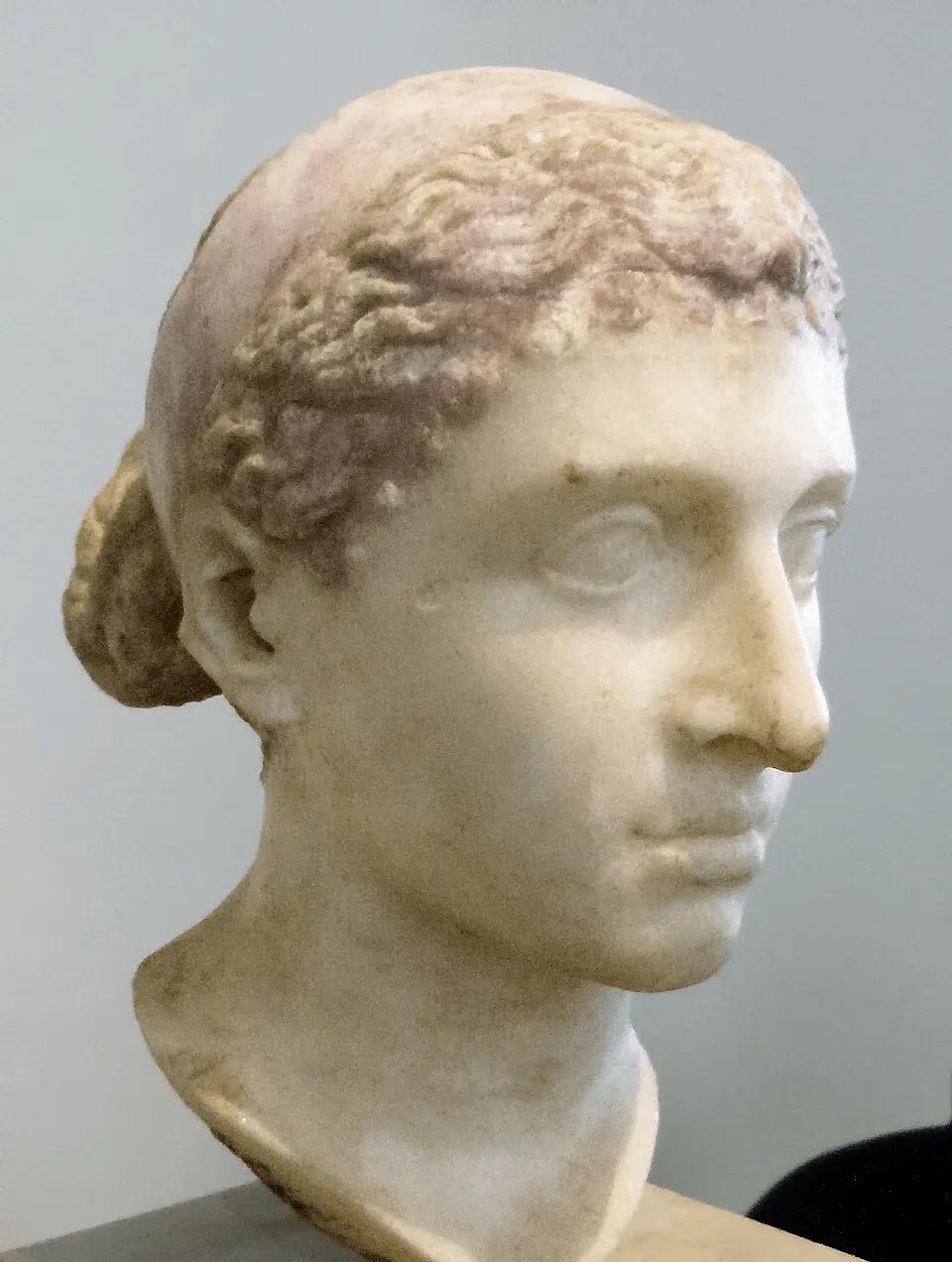
As is often the case with how women’s stories are recorded in history, Queen Cleopatra’s legacy has been watered down and trivialized, reduced to a tale that highlights only her beauty. But, as Egypt’s last pharaoh, she was more than just another pretty face.
For centuries, Roman sources vilified her. After all, she was not only a ruler who dared to challenge their empire — she was also a woman, and a foreign one at that. The easiest way to diminish her was to paint her as a dangerous seductress who relied on beauty rather than brains.
Beyond her famed looks, Cleopatra was a brilliant strategist and a shrewd politician who shook Ancient Rome to its core. She ruled Egypt during one of its most precarious eras and held onto her throne against the most powerful men of her time.
If we strip away the propaganda and gossip, what emerges is not a temptress but a queen whose real power lay in her intellect, charisma, and unshakable political instinct.
The Egyptian Queen: Beloved By The Whole Nation
To really understand Cleopatra VII, we have to start with her family—the Ptolemies. They weren’t originally Egyptian at all. Cleopatra’s ancestor, Ptolemy I Soter, was one of Alexander the Great’s generals. When Alexander died and his empire fell, Ptolemy swooped into Egypt, kicked out the Persian rulers, and set up a dynasty of Greek monarchy.
On paper, the Ptolemies were Egypt’s rulers for almost 300 years, but to most Egyptians, they were still outsiders—colonizers running the country for their own gain.
So when Queen Cleopatra came to power, she faced the challenge of ruling not just as a Ptolemaic queen, but as a queen for all Egyptians. To secure her position, she had to follow tradition, and that meant marrying her little brother, Ptolemy XIII.
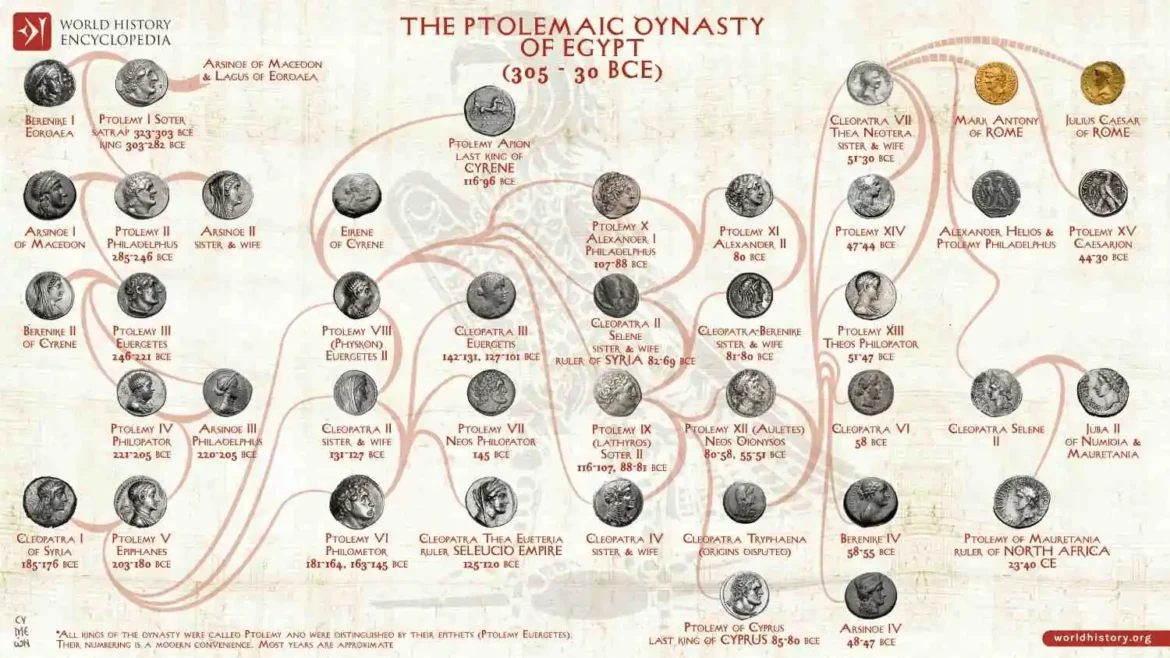
As strange as that sounds today, pharaonic tradition baked sibling marriage into royalty, reflecting the divine union of the Egyptian gods Isis and Osiris. Cleopatra leaned into this symbolism, even likening herself to Isis to root her image more deeply in Egyptian culture.[1]

She introduced economic reforms, like devaluing the currency to boost exports and stabilizing the grain supply to prevent famine. She also reduced taxes for farmers, a rare move that earned her genuine support from the countryside and, in turn, helped keep Egypt stable and valuable in Rome’s eyes as its most reliable grain supplier.[2]
The Politician: Master of Alliances
Around the mid-1st century BCE, Rome was the heavyweight of the ancient world—the richest, most powerful empire on the map. Egypt, with its grain, gold, and trade routes, was too tempting for Rome to ignore.
Cleopatra understood one brutal truth: if Egypt was to survive, she had to play Rome’s political game better than the Romans themselves.
Her first big gamble was her love affair with Emperor Julius Caesar.
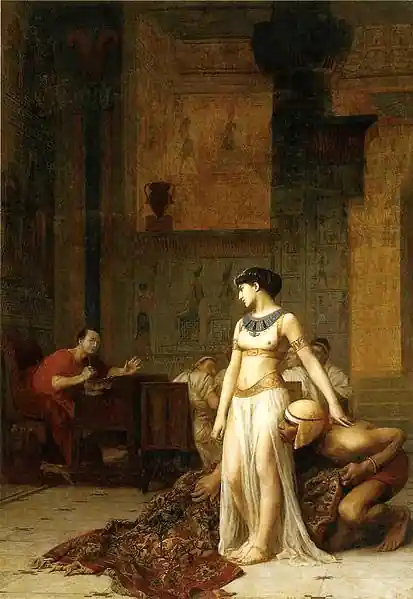
Despite being married and theoretically sharing the throne together, Ptolemy XIII wanted the throne for himself. In classic Ptolemaic fashion, that meant civil war.
When Caesar arrived in Egypt, Cleopatra seized the chance. Legend has it she had herself smuggled into his quarters, rolled up in a carpet (or bedding), a dramatic entrance that could just as easily have gotten her executed if Caesar had turned her away. But Caesar didn’t reject her.
With his support, Ptolemy was pushed out of the picture (spoiler: he drowned while fleeing battle), and Cleopatra was back on top.[3]
Her influence stretched beyond Egypt—she even bore Caesar a son, Caesarion, imagining him as a living bridge between the two powers.
After Caesar’s death, she forged a partnership with Mark Antony, another Roman powerhouse.[4] Together, Cleopatra and Antony dreamed big — a Rome-Egypt superpower to rival Julius Caesar’s successor, Octavian (the future Augustus Caesar).
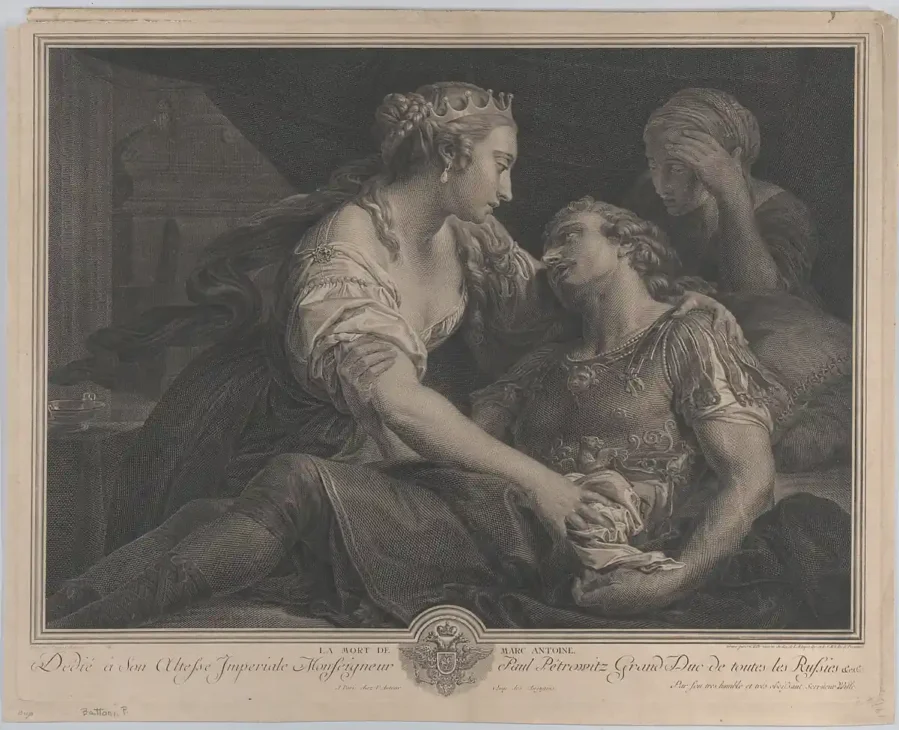
Roman historians found it unthinkable that Cleopatra could win over not one but two of Rome’s greatest generals—so they fell back on the same tired explanation: she was dangerously beautiful and seductive.
Because, of course, a woman couldn’t have had any other appealing traits apart from her looks.
The Diplomat: Language and Culture as Weapons
Unlike most of her Ptolemaic predecessors, Cleopatra didn’t just slap on a headdress and call it a day—she actually embraced being Egyptian. One of her first acts as queen was to go on a pilgrimage across the country, meeting her people and learning their customs.
Her first official act was a religious one. She traveled to Hermonthis (aka Armant, a town in Ancient Upper Egypt) to oversee the installation of a sacred Buchis bull, believed to be a vessel for the god of war, Montu.[5]
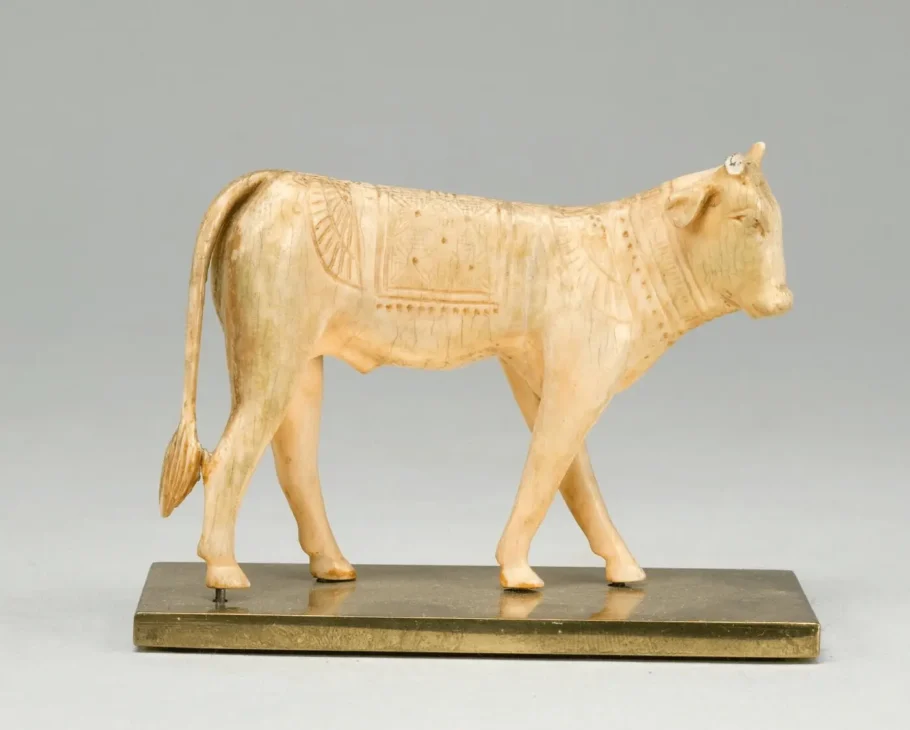
People saw Queen Cleopatra’s participation in this ritual as her statement that she was a queen of Egypt for all Egyptians, not just the Greek elite who had ridden in with her ancestors centuries before.
Unknown to many, Cleopatra was also an academic in her own right. She spoke multiple languages—nine, according to some sources—including Greek, Egyptian, and Aramaic.[6] In a dynasty where most rulers couldn’t even be bothered to learn Egyptian, this was a big deal.
Contrast this with rulers like her father, Ptolemy XII, who spent much of his reign in Rome’s pocket and never won the love of his subjects.
Every step, from the pilgrimages to the language learning, was deliberate. Cleopatra understood that her legitimacy didn’t just rest on her bloodline; it depended on whether the Egyptian people actually saw her as their queen. And unlike the Ptolemies before her, she was willing to put in the work.
The Femme Fatale Archetype is Misleading
The seductive Cleopatra we know today is not the woman who ruled Egypt—there, I said it.
Cleopatra’s sexuality became the centerpiece of her legacy not because it defined her, but because it suited Rome’s political narrative.
But seduction was only one tool in her arsenal—no different from language, religion, or diplomacy. To suggest that her beauty alone carried her to power is to ignore the decades she spent outmaneuvering rivals, leading armies, and administering her kingdom.
The femme fatale archetype reduces her to a trivial caricature. Continuously subscribing to this image is a disservice to her legacy as arguably Egypt’s most daring and successful pharaoh, who once thrived in a male-dominated world.
Frequently Asked Questions (FAQs)
What was Cleopatra famous for?
Cleopatra was the last pharaoh of Egypt, known for her political skill, intelligence, and alliances with Julius Caesar and Mark Antony. She also enacted reforms and worked to connect with her Egyptian subjects.
What caused Cleopatra’s death?
Cleopatra died by suicide in 30 BCE after Octavian’s victory over her and Mark Antony. Ancient writers say she used an asp (snake), though some suggest poison instead.
Was Queen Cleopatra dark skinned?
Cleopatra was of Macedonian Greek descent through the Ptolemaic dynasty, though her mother’s ancestry is uncertain. Her exact appearance is debated, but her power rested more on her intellect and charisma than on her looks.
References:
[1] Cleopatra the Great: Last Power of the Ptolemaic Dynasty – ARCE
[2] An Inside Look at Cleopatra’s Political Maneuvers: Navigating Power in Ancient Egypt
[3] Cleopatra, Julius Caesar And Mark Antony: Her Love Affairs Explored | HistoryExtra
[4] Antony and Cleopatra’s Legendary Love Story
[5] Cleopatra Biography and Facts
[6] ANE Today – Cleopatra’s Languages – American Society of Overseas Research (ASOR)


